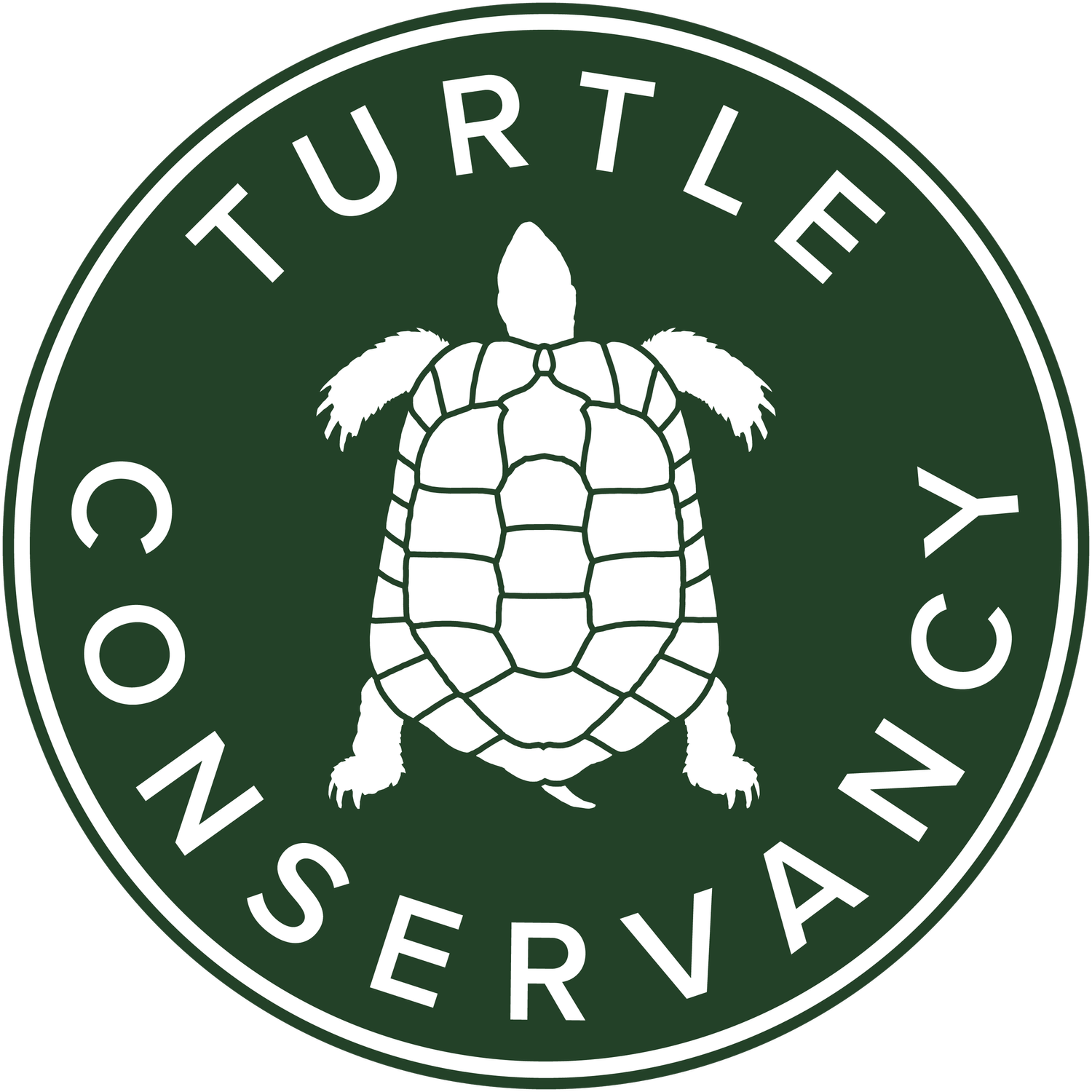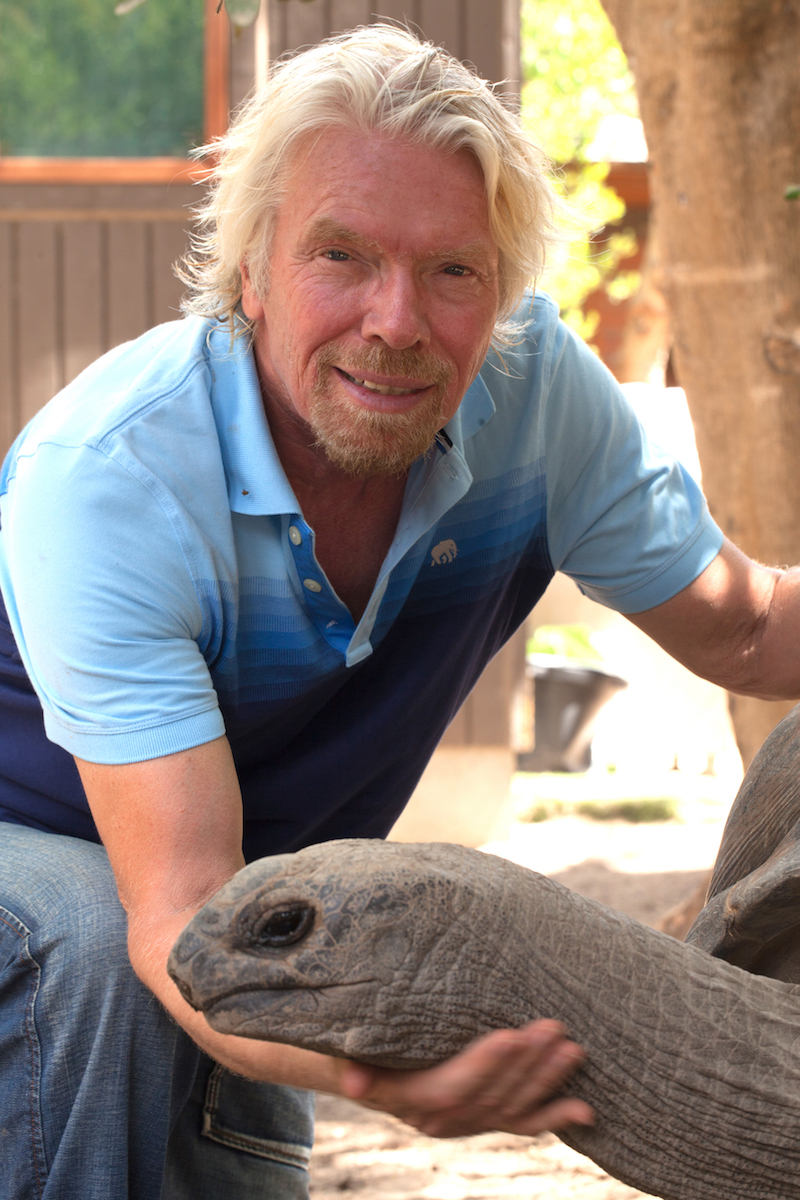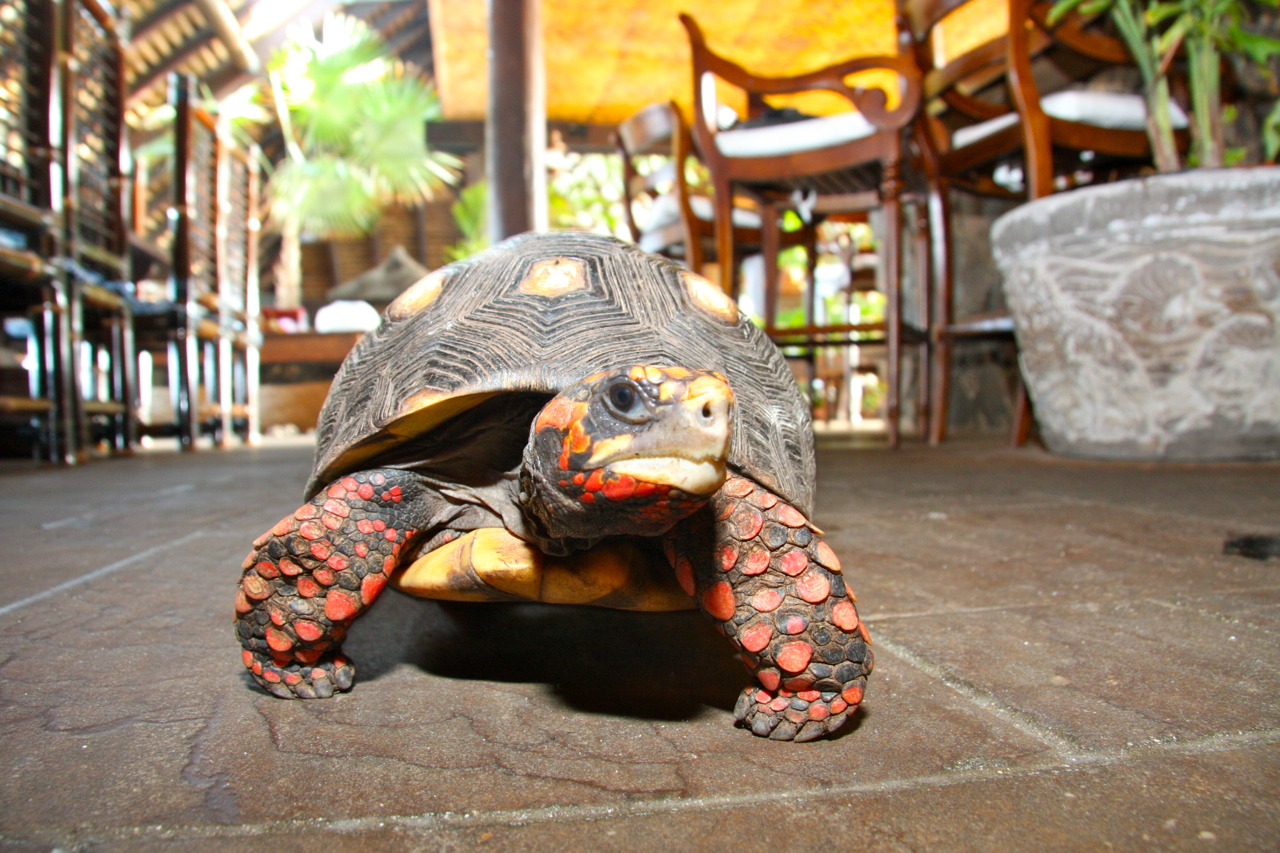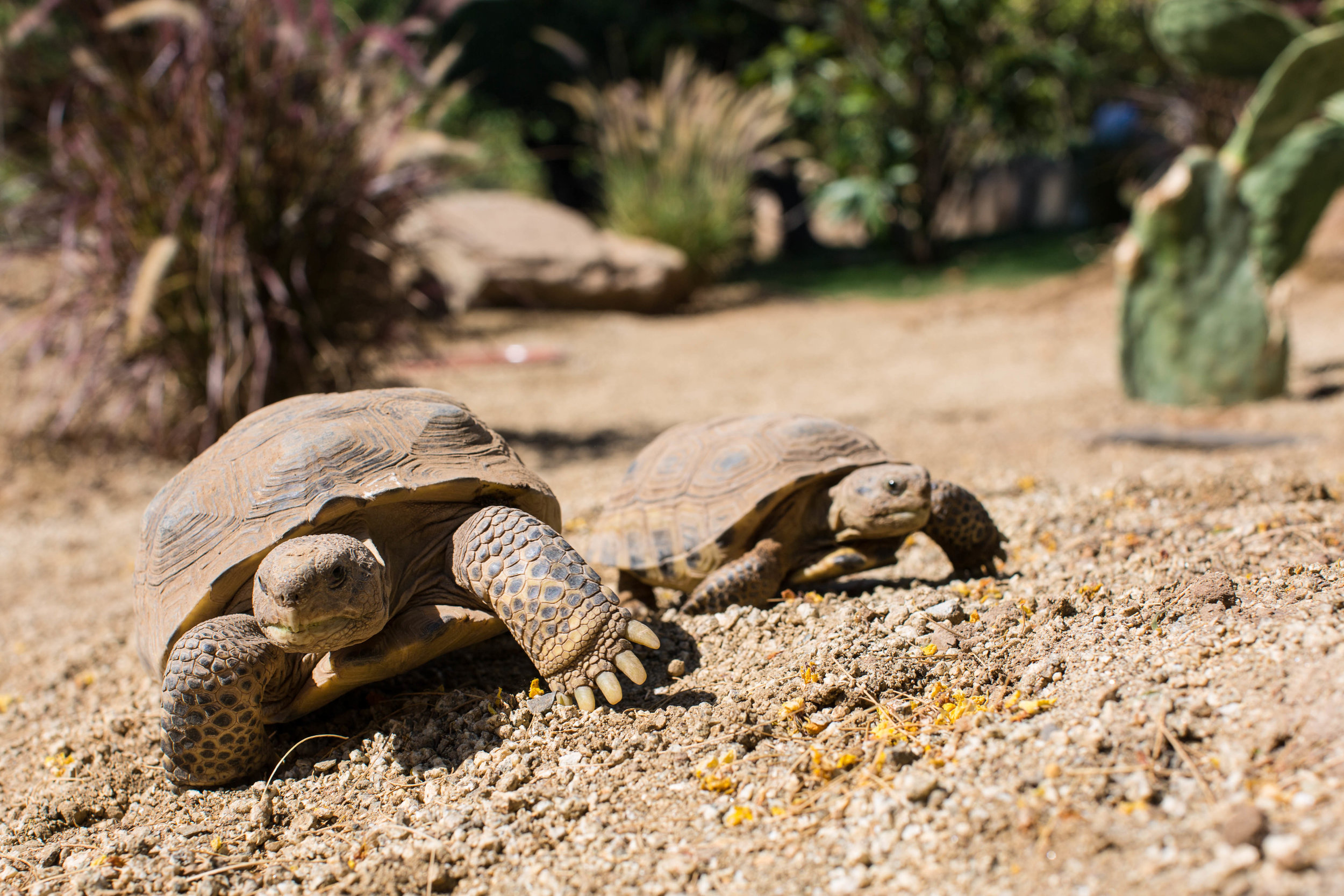Turtles in Trouble
With half of all turtle and tortoise species threatened with extinction, turtles are one of the world’s most endangered vertebrate groups. A new report from the Turtle Conservation Coalition—a collaborative partnership of leading turtle conservation organizations—highlights the world’s 25+ most imperiled tortoise and freshwater turtle species, and the conservation opportunities to prevent their extinction.
TC Tortoises Find Shelter on Private Island
It's not just people who need a winter getaway in a tropical paradise. Tortoises, too, enjoy the sun of a Caribbean island, in this case, Sir Richard Branson's Necker Island Resort in the British Virgin Islands. In the spirit of conservation and continuing our partnership with Sir Richard, on Valentine's Day, 24 captive-bred Critically Endangered tortoises traveled from the Turtle Conservancy to their new home on Necker Island. Included were four Radiated Tortoises (Astrochelys radiata), the first of their species to be internationally relocated. Also in the group were 10 Burmese Star Tortoises (Geochelone platynota) and 10 Burmese Black Mountain Tortoises (Manouria emys phayrei), which will join the five of each species we previously sent in 2015.
Sir Richard is not only interested in the native ecology on Necker, but he is also focused on the global extinction crisis specifically with lemurs and tortoises. Already present on Necker are herds of giant Indian Ocean Aldabra Tortoises (Aldabrachelys gigantea), Red Footed Tortoises (Chelonoidis carbonaria), Burmese Black Mountain Tortoises (Manouria emys phayrei), and Burmese Star Tortoises (Geochelone platynota).
Burmese Star Tortoises and Radiated Tortoises are both in the top 25 most endangered species of turtles and tortoises in the world. In Madagascar, poaching of Radiated Tortoises by local people for food and demand for the pet trade has decimated this once plentiful species. In Myanmar, the black market pet trade has virtually wiped out all wild individuals of the Burmese Star Tortoise. Unfortunately, demand still exists for both these species, making reintroductions to their native ecosystems costly and difficult. Fortunately for the Turtle Conservancy, an alternative approach arose, in the form of Sir Richard Branson and Necker Island.
With our guidance and the skill of Necker’s Wildlife Conservation Manager, Vaman Ramlall, Sir Richard and team built a large outdoor compound to house the VIP residents. These new arrivals will be managed in very large open-air paddocks as another breeding colony in the battle against extinction. The climate and ecology of the island are ideal for these animals. Our ultimate goal is to restore all of these species back in their native lands, but for now, assurance colonies represent the ideal way to secure and propagate species still under threat in their natural environment, in their fight against extinction.
Transfer of these CITES I and CITES II tortoises to Necker Island was a lengthy process for all concerned, involving multiple permits, health certificates, and reams of other documentation. The Turtle Conservancy is especially grateful to shipping agent Juan Herrans along with Javier Pacheco of the US Fish & Wildlife Service in Puerto Rico who facilitated the transfer of the animals to the British Virgin Islands.
Read more about the tortoises of Necker Island in the 2014 edition of The Tortoise Magazine.
Saving Madagascar’s Ploughshare Tortoise
New Turtle Nursery
Saving the Imperiled Palawan Forest Turtle
Through the efforts of our partner the Katala Foundation, Inc. (KFI), and with support from Rainforest Trust, Global Wildlife Conservation and Turtle Conservancy, the local government of Mendoza with the support of the municipal government of Roxas, Palawan, designated 1890 acres of forest lands as a Protected Watershed, in effect creating a wildlife protection area which will directly benefit the Critically Endangered Palawan Forest Turtle.
Thomas Fire Relief Effort
This Holiday Season, the Turtle Conservancy suffered through the largest wildfire in California history. The Thomas Fire, one of the most destructive ever recorded, occurred during a time of year when fires are typically rare. The Turtle Conservancy team had just practiced our annual fire drill about a week before the fire started, so when we were alerted that Santa Ana winds had rocketed the flames more than 15 miles in just a few hours, our team jumped into action. Like the proverbial well-oiled machine, we had the animals packed up and ready to go by the time we received mandatory evacuation orders. It was extremely reassuring to have the Charles Paddock Zoo find a place for us to stay at historic City Hall in Atascadero for 5 days. We thank ZooMed Labs for providing some of the specialty equipment we needed during the evacuation.
While the turtles and tortoises waited patiently in safe, quiet conditions, our dedicated team, under the steadfast leadership of co-founder and president, Eric Goode, fought back the flames that at times reached within 20 feet of our property boundary. Many homes were lost and more than a quarter-million acres burned in the first few days. We felt a deep gratitude for the firefighters, and profound relief that we could return the animals to a home that had been spared.
Our recovery work is now just beginning. Insurance will cover some costs, but we learned that it is our responsibility to prevent wildfires from taking lives and property. Not only must we purchase tens of thousands of dollars of air filters, facemasks, safety clothing, and other equipment, we know exactly how to prepare our facilities and people to effectively fight fires in the future. We have assessed what happened, and now it is time to prepare ourselves for a future where such fires are predicted to become increasingly more severe.
As you count your blessings over the coming week, know that we feel tremendous gratitude that you have helped us protect some of the world's most endangered species from extinction, and this year also from the immediate threat of an unprecedented wildfire. In the aftermath of the Thomas Fire, your financial support, no matter how large, will have a tremendous impact right now! Please be generous in your support of the Turtle Conservancy this Holiday Season.
Giving Tuesday
The Turtle Conservancy preserves critical ecosystems and wild lands protecting not only endangered turtles and tortoise but all of the biodiversity within it. Over the past 24 months we have purchased and protected over 45,000 acres in Central America, Africa, and Southeast Asia.
A very generous donor has pledged to match up to $20,000 of every dollar donated to the Turtle Conservancy through December 31st, 2017.
AZA Awards TC $25,500 for Ploughshare Tortoise Conservation
First Hatching of Second Generation Pan's Box Turtles in the United States
Staff members at the Turtle Conservancy are celebrating the hatching of three Critically Endangered Pan's Box Turtles this week at their conservation center in California. This is the first time this species has hatched from captive born parents in the United States. Pan's Box Turtle is considered functionally extinct in its native China due to over-collection for the medicinal and pet trades...
How 3D Printing Could Save Baby Tortoises
Over 2,500 Baby Diamondback Terrapins Released!
Daniel Craig: The Search for Lost Species
All around the world, across habitats, across taxa and for all kinds of reasons, once-discovered species have fallen off our radar. These lost species are animals or plants that have gone unseen for years or decades and are feared possibly extinct. This collaborative effort between the Turtle Conservancy, Global Wildlife Conservation, and many others has been undertaken to search for the 25 most wanted lost species...
Thank You Nature and Culture International!
Terrapin Nesting Project
Green Beetz
New Tortoise Enclosure
PHOTO CAPTION: Armando Jimenez and Angel Reyes with two young Bolson Tortoises.
The latest guests to check in to our Southern California Conservation Center, three young Bolson Tortoises (Gopherus flavomarginatus), are adjusting to life inside of their expansive, new environment. These tortoises came to the Turtle Conservancy last month from a robust assurance colony at Ted Turner's Armendaris Ranch in New Mexico. The Turtle Conservancy and Turner Endangered Species Fund are collaborating on a trans-national effort to protect this tortoise from extinction, which will include reintroducing the species in key locations of its former range in the United States.







































